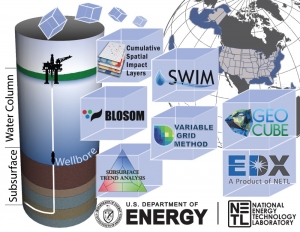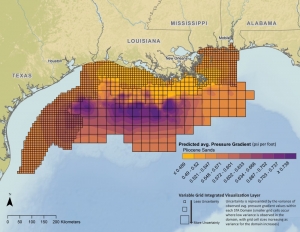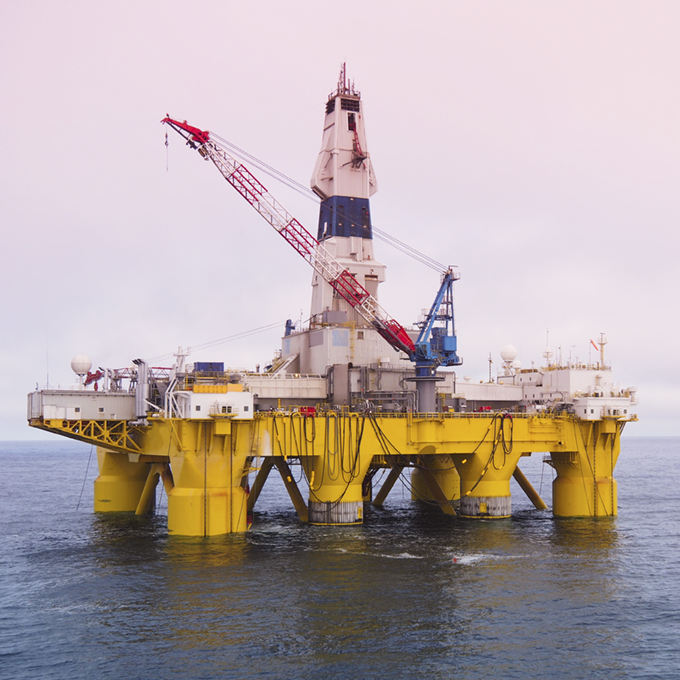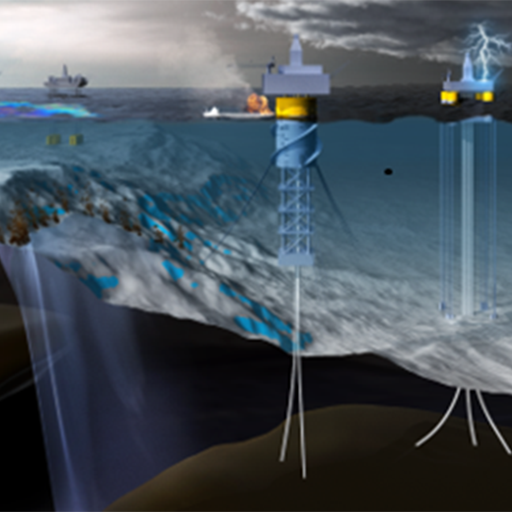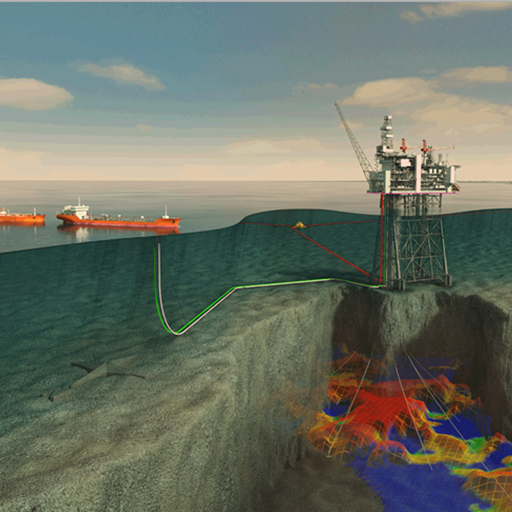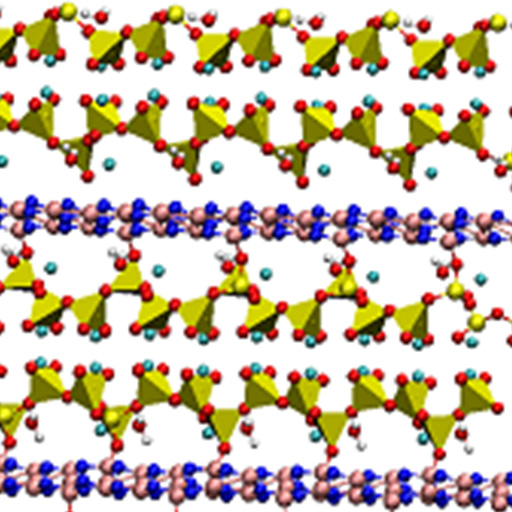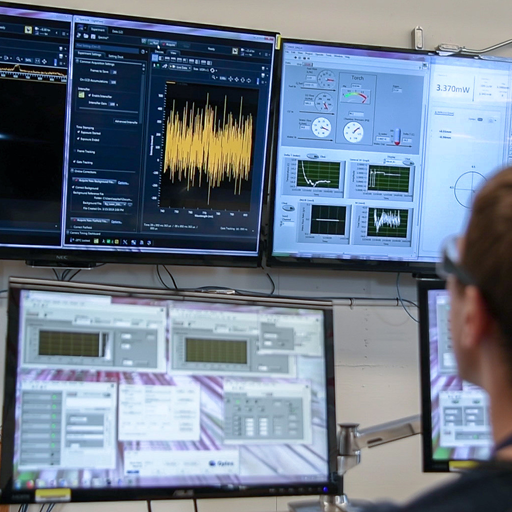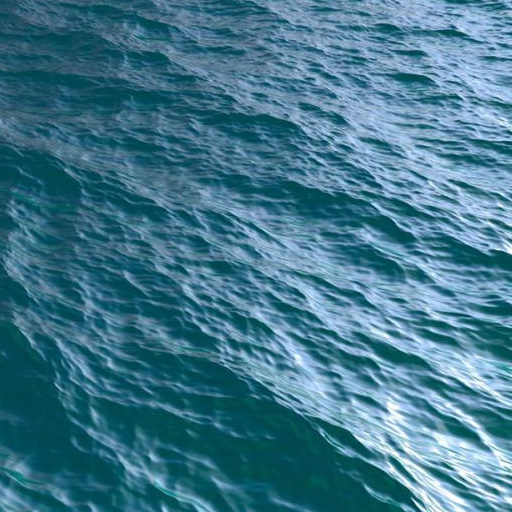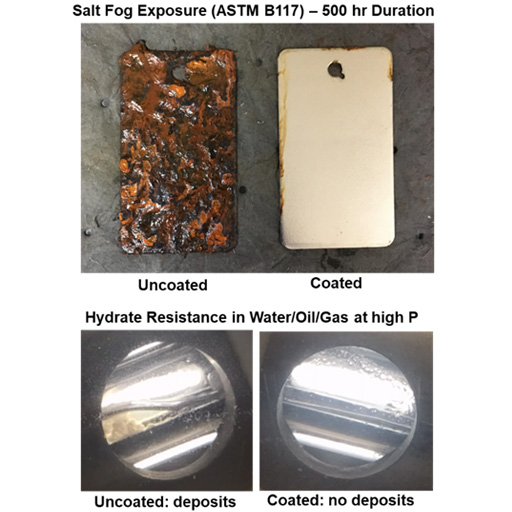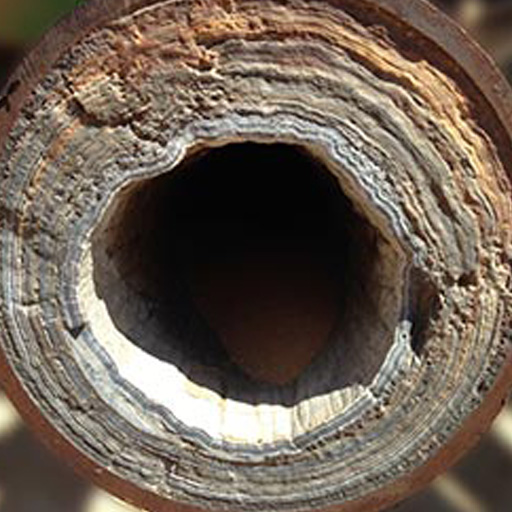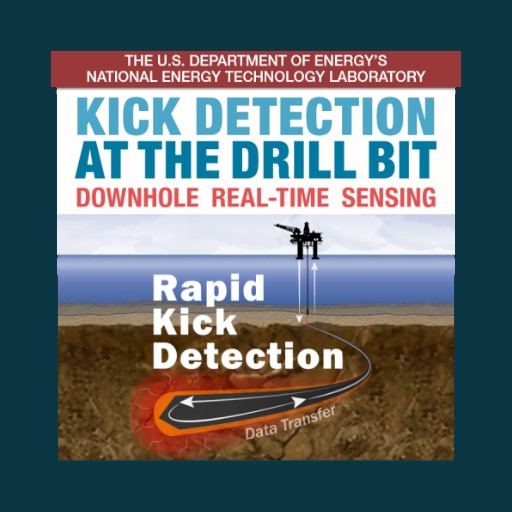Overview
Motivation for this Phase 1 project stemmed from the advancement of offshore oil and gas operations into extreme offshore environments that are often remote, environmentally sensitive, and economically challenging. The lessons learned from Hurricanes Rita and Katrina and the 2010 Deepwater Horizon oil spill in the Gulf of Mexico were also impetuses for the development of this project. These events highlighted the need for improved models, data, and tools to identify knowledge and technology gaps with offshore hydrocarbon exploration and production systems to help prevent future spills and provide predictions for a range of end-users. This project focused on developing an integrated modeling and data system from the subsurface to the shore, including evaluation of potential risks and identification of knowledge and technology gaps to inform offshore spill prevention efforts. It has continued into Phase 2 as Geohazard and Subsurface Uncertainty Modeling.
Approach
This project provided data, tools, and techniques to evaluate the potential risks and identify possible knowledge and technology gaps in the offshore system using science-based, data-driven assessments. The tools and techniques leveraged advanced big data science and computing to innovate and advance the understanding of spatial and temporal behaviors and relationships for engineered-natural, multi-variate systems. These products can support the analysis of subsurface, wellbore, and water column to evaluate relationships, trends, risks of offshore spills, and uncertainty.
Researchers developed a new multi-component model, the Offshore Risk Model (ORM), which ties the subsurface, wellbore, and water column into an integrated assessment model. ORM relies on the synthesis of data—from the subsurface to the shore—to develop innovative tools and approaches to drive analyses that effectively evaluate and reduce risks associated with extreme offshore hydrocarbon development.
Data have been collected and integrated into NETL’s Energy Data eXchange (EDX), providing a single point of discovery and access. Since the start of this project, over 6 terabytes of data have been collected and incorporated into EDX. Along with discovery and access to these data via EDX, users can visualize data using GeoCube, a custom web-based mapping application. GeoCube supports basic spatial and temporal analysis, allowing users to quickly identify overall trends and patterns in the data, as well as share these discoveries with others using various export functions (print, snapshot, and extract data). In addition, these data have been used to develop five science-based, data-driven tools and models for the ORM to support the evaluation and reduction of risks and uncertainty associated with extreme offshore hydrocarbon development. These five tools and models address concerns from the subsurface, wellbore, and water column to evaluate relationships, trends, risks of offshore spills, and uncertainty. The tools are:
- Subsurface Trend Analysis (STA)—a data-driven approach for improving geologic knowledge and reducing subsurface uncertainty;
- Blowout and Spill Occurrence Model (BLOSOM)—a 4D fate and transport model for simulating oil spills to support spill prevention and provide a greater understanding of how hydrocarbon leaks from all sources are transported throughout offshore systems;
- Cumulative Spatial Impact Layers (CSIL)—a spatial-temporal approach for rapidly quantifying potential impacts;
- Spatially Weighted Impact Model (SWIM)—a decision support tool driven by multi-variate relationship models and user-defined weights; and
- Variable Grid Method (VGM)—an approach for quantifying and visualizing uncertainty associated with spatial data. The VGM is pictured below.
Outcomes
Research Products
For a video overview of the ORM suite, please see: https://youtu.be/iN1REKcfXxQ.
Building Regional Baselines and a Suite of Spatial Tools to Better Prepare for Oil Spills
Romeo, L., Dyer, A., Nelson, J., Bauer, J., Rose, K., Dao, A., Wingo, P., Creason, C.G., and Sabbatino, M. Building Regional Baselines and a Suite of Spatial Tools to Better Prepare for Oil Spills, AGU Ocean Sciences Meeting 2020. https://www.agu.org/Ocean-Sciences-Meeting
Exploring Beneath the Basemap. GIS for Science
Romeo, L., & Rose, K., et. al. (2020). Exploring Beneath the Basemap. GIS for Science. https://www.gisforscience.com/chapter5/v2/
Environmental Economics and Uncertainty: Review and a Machine Learning Outlook, in the Oxford Encyclopedia of Environmental Economics
In press.
Zhang, R., Wingo, P., Duran, R., Rose, K., Bauer, J., and Ghanem, R.
Subsurface Trend Analysis, a Multi-Variate Geospatial Approach for Evaluation of Geologic Properties and Uncertainty Reduction, Interpretation
In press.
Rose, K.; Bauer, J. R.; Mark-Moser, M.
Developing a Virtual Subsurface Data Framework: Transforming DOE’s EDX data lake using ML/NLP
Presented at AGU Annual Meeting 2019, San Francisco, CA, Dec 9-13, 2019.
Rose, R. Rowan, C., Sabbatino, M., Baker, V., Bauer, J., Creason, C.G., Jones, T.J., Justman, D., Romeo, L., Suhag, A., Yeates, D., and Walker, S.
Integrating artificial intelligence with the Subsurface Trend Analysis to predict porous media properties
Presented at AGU Annual Meeting 2019, San Francisco, CA, Dec 9-13, 2019.
Mark-Moser, M.; Rose, K.; Bauer, J.; Wingo, P.; and Suhag, A.
Bringing uncertainty to the forefront of informed decision making in oil and gas exploration and development
Presented at SPE Annual Technical Conference and Exhibition, Calgary, Canada, Sept. 30-Oct. 2, 2019.
Wanjau, P., Bloomfield, R., Bauer, J., and Rose, K.
Lessons Learned, Best Practices, and Emerging Technologies of Energy Data Management
DOE Data Day, September 25-26, 2019.
Rowan, C., Rose, K., Bauer, J., Jones, T., Baker, V., Barkhurst, A., McFarland, D., Obradovich, J., Chittum, J., Dehlin, M. 2019.
Lessons learned from present and past data preservation and rescue efforts to build “smart” tools for FE data products
Lessons Learned, Best Practices, and Emerging Technologies of Energy Data Management.
DOE Data Day, September 25-26, 2019.
Rose, K., Rowan, C., Baker, V., Bauer, J., Jones, T., Sabbatino, M.
Update on DOE FE’s Virtual Subsurface Data Framework: EDX and ML/NLP Algorithms to Transform Data for Engineered-Natural Systems
Presented at Addressing the nation’s energy needs through technology innovation – 2019 carbon capture, utilization, storage, and oil and gas technologies integrated review meeting, Pittsburgh, PA, Aug 26-30, 2019.
Rose, K., Rowan, C., Sabbatino, M., Creason, C.G., Romeo, L., Bauer, J., Baker, V., Jones, T.J.
An Ounce of Prevention is Worth a Pound of Response, NETL’s Big Data Technologies for Offshore Spill Prevention
Presented at Addressing the nation’s energy needs through technology innovation – 2019 carbon capture, utilization, storage, and oil and gas technologies integrated review meeting, Pittsburgh, PA, Aug 26-30, 2019.
Rose, K.
Building Data-Driven Analytical Approaches and Tools to Evaluate Offshore Infrastructure Integrity
Romeo, L., Wenzlick, M., Dyer, A., Sabbatino, M., P. Wingo, Nelson, J., Barkhurst, A., Bauer, J., and Rose, K. 2019. Building Data-Driven Analytical Approaches and Tools to Evaluate Offshore Infrastructure Integrity. Addressing the nation’s energy needs through technology innovation – 2019 carbon capture, utilization, storage, and oil and gas technologies integrated review meeting, Pittsburgh, PA, August 26–30, 2019
Cumulative spatial impact layers: A novel multivariate spatio‐temporal analytical summarization tool
Transactions in GIS. 2019; 00: 1-29
Romeo, L, et al.
July 2019
https://doi.org/10.1111/tgis.12558
Two Science-Based, Machine Learning Models for Improved Subsurface Geohazard and Resource Assessments
Presented at Machine Learning in Oil and Gas, Houston, TX, April 17 – 18, 2019.
Rose, K.
Persistent Lagrangian Transport Patterns in the Northwestern Gulf of Mexico
Journal of Physical Oceanography, 2019, 49, 353-367.
Gough, M. K.; Beron-Vera, F. J.; Olascoaga, M. J.; Sheinbaum, J.; Jouanno, J.; Duran, R.
January 2019
https://doi.org/10.1175/JPO-D-17-0207.1
Multiscale Stochastic Representations Using Polynomial Chaos Expansions with Gaussian Process Coefficients
Data-Enabled Discovery and Applications 2018, 2, 16
Thimmisetty, C.; Aminzadeh, F.; Rose, K.; Ghanem, R.
December 2018
https://link.springer.com/article/10.1007/s41688-018-0015-4
Simulation of the 2003 Foss Barge – Point Wells Oil Spill: A Comparison between BLOSOM & GNOME Oil Spill Models
Journal of Marine Science and Engineering 2018, 6, 3. DOI: 10.3390/jmse6030104
Duran, R.; Romeo, L.; Whiting, J.; Vielma, J.; Rose, K.; Bunn, A.; Bauer, J.
September 2018
http://www.mdpi.com/2077-1312/6/3/104
Overcoming the publication value bias – Increasing your research impact by pairing dataset and tool citations with standard publication citations using EDX
Presented at the U.S. DOE Mastering the Subsurface through Technology Innovation, Partnership and Collaboration: Carbon Storage and Oil and Natural Gas Technologies Review Meeting, Pittsburgh, PA, Aug 13–16, 2018.
Rose, K.; Kutchko, B.; Bauer, J.; Sabbatino, M.; Romeo, L.; Spaulding, R.; Rowan, C.
Unlocking the power of data and online analytics for oil spill prevention and operational decision making
Presented at the U.S. DOE Mastering the Subsurface through Technology Innovation, Partnership and Collaboration: Carbon Storage and Oil and Natural Gas Technologies Review Meeting, Pittsburgh, PA, Aug 13–16, 2018.
Bauer, J.; Wingo, P.; Romeo, L.; Barkhurst, A.; Rose, K.; Nelson, J.; Bunn, A.
Developing a Smarter Way to Search – Parsing the online “forest” to find data for your research needs via EDX
Presented at the U.S. DOE Mastering the Subsurface through Technology Innovation, Partnership and Collaboration: Carbon Storage and Oil and Natural Gas Technologies Review Meeting, Pittsburgh, PA, Aug 13–16, 2018.
Baker, D. V.; Bauer, J.; Rose, K.
Detailed Analysis of Geospatial Trends of Hydrocarbon Accumulations, Offshore Gulf of Mexico
NETL-TRS-13-2018; NETL Technical Report Series; U.S. Department of Energy, National Energy Technology Laboratory: Albany, OR, 2018; p 108. DOI: 10.18141/1461471.
Mark-Moser, M.; Miller, R.; Rose, K.; Bauer, J.; Disenhof, C.
July 2018
https://edx.netl.doe.gov/dataset/detailed-analysis-of-geospatial-trends-of-hydrocarbon-accumulations-offshore-gulf-of-mexico/resource_download/bbc09d03-004d-45dd-98ca-37a1352b0485
Combining products of fossil energy R&D with advanced data computing to develop a virtual subsurface data framework for the U.S.
Presented at InterPore2018, New Orleans, May 14–17, 2018.
Rose, K.; Justman, D.; Baker, D. V.; Bauer, J.; Dehlin, M.; Jones, T. J.; Rowan, C.; Digiulio, J.; Sabbatino, M.
Starting “Small” to Go Big – Building a Living Database
Presented at the Extremely Large Database Conference, Stanford Campus, CA, April 30–May 2, 2018.
Sabbatino, M.; Baker, D.V.; Rose, K.; Bauer, J.; Romeo, L.; Barkhurst, A.
Reducing Uncertainty in the Subsurface: Refining Subsurface Property Predictions in the Gulf of Mexico Using the Subsurface Trend Analysis
Presented at the Haynesville DPA Playmaker Forum, Houston, TX, Apr 26, 2018.
Rose, K.; Mark-Moser, M.; DiGiulio, J. P.; Bauer, J. R.
Extracting quasi-Steady Lagrangian transport patterns from the ocean circulation: An application to the Gulf of Mexico
Scientific Reports 2018, 8, 10. DOI:10.1038/s41598-018-23121-y.
Duran, R.; Beron-Vera, F. J.; Olascoaga, M. J.
March 2018
https://www.nature.com/articles/s41598-018-23121-y
Explore research products that are related to this project.
See related Phase 2 projects.
*Image Source: NETL, 2018
Infographic on critical components and value added from the Offshore Risk Modeling Suite.
*Image Source: NETL
The Offshore Risk Modeling (ORM) suite offers tools that address the entire offshore system (from the subsurface and wellbore, through water column, to the sea surface and coastline). To date, the ORM also provides terabytes of data for federal waters in the Gulf of Mexico, and offshore California and Alaska to drive all the ORM tools, models, and analytics.
*Image Source: NETL
Example oil spill forecast (dark gray- black tones) and possible socio-economic and environmental impacts (green – red tones) outputs from both data and tools, specifically the BLOSOM, CSIL, and SWIM models, that make up the Offshore Risk Modeling suite. These integrated outputs offer critical data reduce risks and cost associated with offshore exploration and production.
*Image Source: NETL
Subsurface pressure gradient, developed using data and the STA and VGM from the Offshore Risk Modeling Suite. Together, STA and VGM offer and improved prediction of subsurface pressure gradients in the offshore Gulf of Mexico, include for regions with little to no data; provide novel insights that can improve resource estimates, increase profitability, and reduce geohazards.
Contacts
Kelly Rose
Principal Investigator
Offshore Portfolio Lead
Jennifer Bauer
Co-Principal Investigator
Alexandra Hakala
Senior Fellow (Detail)
Geological & Environmental Systems
Roy Long
Offshore Portfolio Technical Manager
Effective Resource Development
Philip Reppert
Associate Director
Geological & Environmental Systems



